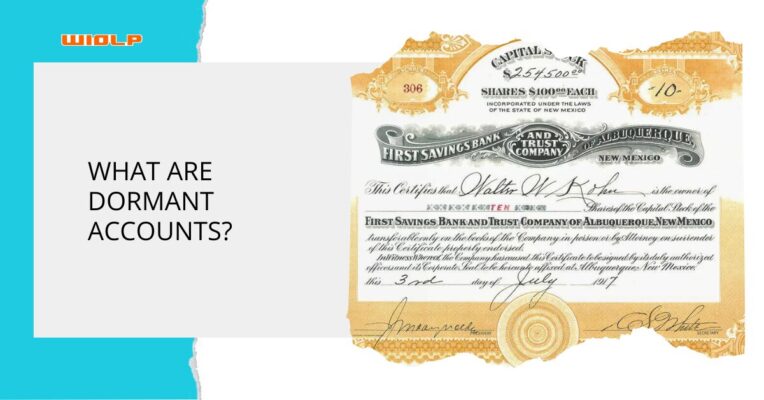In the digital age, financial assets span across borders, generations, and institutions. Billions of dollars lie unclaimed in dormant accounts across the world, with individuals unaware of their existence or it is not even within their capabilities to contact dozens or even hundreds of institutions to recover them.
While the issue of dormant accounts has long been recognized, the recovery of dormant accounts remains trapped in an outdated and fragmented system.
Let’s delve into why a centralized solution is essential, examine the problems with the current fragmented system, and explore how WIOLP’s centralized platform of dormant accounts allows for a solution for both individuals and financial institutions.
The Scope of the Problem
- Fragmented Systems: Financial institutions operate independently, maintaining their own dormant account policies and databases. While some have digitized their records, others still rely on paper archives or limited-access systems. For an individual, this means contacting dozens of institutions worldwide to locate a potential account – a daunting and impossible task.
- Impractical Search Process: Most financial institutions rely on a passive approach, advising potential claimants to contact them if they believe they might have a dormant account in the institution. This assumes that individuals know where to look, however most of the time individuals have to rely solely on guesswork or luck.
- Cross-Border Challenges: Global migration trends have scattered families across continents. Approximately 70% of the world’s population has experienced migration, either within their lifetimes or through their ancestors. This dispersal means dormant accounts often reside in countries foreign to the claimant.
- Lost Ancestral Knowledge: Most dormant accounts were created generations ago and forgotten by the account holders. Descendants often lack the necessary details, such as the institution’s name, account numbers, or even the full legal name of the account holder. This lack of information makes it impossible to rely on traditional methods of account recovery.
-
Exponential Name Variations: Name changes due to marriage, migration, or cultural adaptation add complexity. A single name can have multiple variations or combinations over time and geography.
Example:
“Maria Garcia Lopez” might appear as “Mary Lopez-Garcia“, “Maria L. Garcia“, or even “Marie Garcie” in different contexts. - Institutional Response Delays: When individuals manage to contact financial institutions, they face significant delays. Response times range from 30 to 120 days, with no guarantee of accurate or helpful information. This inefficiency discourages further attempts, leaving many assets unclaimed.
- Missed Opportunities for Financial Institutions: Financial institutions also suffer under the fragmented system. Dormant accounts represent unproductive assets and legal liabilities, requiring resources to manage and report while yielding no active engagement with customers. Without a streamlined way to resolve dormant accounts, these institutions face reputational and operational challenges.
WIOLP offers a groundbreaking platform to address these challenges
Fragmented System vs. WIOLP Centralized Solution
| Aspect | Fragmented System | WIOLP Centralized Solution |
|---|---|---|
| Search Scope | Limited to individual institutions | Global, covering thousands of institutions |
| Name Variations | Handled manually, leading to missed opportunities | AI-powered matching accounts for variations |
| Time to Process | 30-120 days per institution | Real-time results with iterative refinement |
| Cost | High for both individuals and institutions | Cost-efficient for all parties |
| Accessibility | Limited geographic boundaries | Cross-border accessibility |
| Efficiency | Highly inefficient and labor-intensive | Streamlined and user-friendly |
Example 1: Searching for an Ancestor’s Account
- Fragmented System: A potential claimant suspects their great-grandfather, “Johann Schmidt“, had an account but isn’t sure if it was in Germany or the U.S. He sends requests to multiple institutions with various name combinations, waiting months for responses with no guarantee of success.
- WIOLP Solution: The potential claimant enters “Johann Schmidt” into the search engine, which identifies accounts under variations like “John Smith” or “Johann Schmitt” and provides relevant results. Subsequently, the potential claimant contacts the relevant financial institution and the claim process begins.
Example 2: Searching for an Ancestor’s Account
A potential claimant in India seeks to locate a dormant account his grandfather “Rajesh Nair” may have opened in the United Kingdom before returning to India in the mid-1900s.
- Fragmented System: A potential claimant must first identify possible financial institutions in the UK and contact each institution individually. Financial institution takes weeks or months to respond, with no guarantee of success and potential claimant spends significant time and resources on this process, often with little clarity or coordination.
- WIOLP Solution: A potential claimant inputs his grandfather’s details (with possible variations of names) into the centralized platform. WIOLP AI tools account for name variations, migration history, and partial records, delivering relevant matches across UK institutions in real-time. The results display potential dormant accounts with details for the next steps and potential claimant saves months of effort.
WIOLP is not just a boon for individuals; it also offers financial institutions several critical advantages.
Benefits for Financial Institutions
1. Global Reach
WIOLP enables financial institutions to connect with potential clients/heirs located around the world, while also enabling individuals to locate and claim dormant accounts in multiple countries simultaneously.
2. Regulatory Compliance
WIOLP allows financial institutions operating in different jurisdictions to simultaneously, actively disclose, and manage these dormant accounts, always in accordance with the regulations of the jurisdiction in which the specific account is located.
3. Publishing by the Law
Unifies, standardizes, and solves the issue of publication. It allows publishing without breaching banking secrecy, personal data protection, or security protocols.
4. Reduced Administrative Burden
WIOLP reduces the administrative burden on financial institutions. By centralizing dormant account data, WIOLP minimizes the need for institutions to respond to countless individual requests and can focus on meaningful matches instead of fielding speculative requests.
5. Database Maintenance
Regularly updating and publishing lists of dormant accounts helps financial institutions reconcile their records and maintain a cleaner and more accurate database.
6. Enhanced Reputation
By proactively and innovatively addressing dormant accounts like WIOLP, financial institutions demonstrate a commitment to fairness and the return of unclaimed funds. This not only enhances compliance but also strengthens customer relationships, and enhances reputation.
Dormant accounts represent untapped potential for both individuals and financial institutions.
By simplifying the process, a global platform empowers individuals to reclaim assets that would otherwise remain lost. Families can recover lost assets across the world that may hold sentimental and financial value.
Moreover, reclaimed dormant accounts could inject significant resources into economies, benefiting both individuals and financial systems. For claimants, these assets might fund education, healthcare, or investments.
Is your financial institution ready to transform the way it manages dormant accounts and become an innovation leader in its industry? Let’s start the conversation – Book a meeting
301X
Register now and find lost financial assets in financial institutions.





